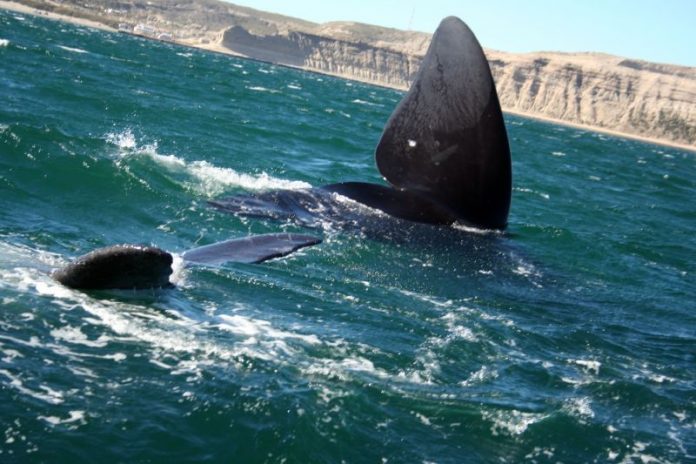
Scientists in the United States warned last week about the impending extinction of the North Atlantic right whale. The animal population is decreasing at alarming rates in spite of conservation and protection efforts, leaving some 450 specimens alive in the wild, according to the NOAA.
The agency and other researchers have been studying the right whales since the start of the decade when it became apparent that the large mammals were growing fewer in numbers. Experts reported that 2017 was particularly rough, with 17 deaths registered in total.
Common causes of death for right whales include entanglement with fishing nets and fatal collisions with vessels. However, there are other factors that influence the population slowdown, and scientists say the community should pay attention to those as well to avoid the extinction of the species.
Just slightly more than 100 reproducing North Atlantic right whale females are alive today. And while males can live to 85 years of age, 2/3 of females die before reaching 30. Learn more about the plight of this disappearing species: https://t.co/ucObhmjMKO pic.twitter.com/vXB2IUzf3T
— Yale Environment 360 (@YaleE360) December 9, 2017
Ships, fishing nets, and stress are killing right whales
The leading reasons why the right whale population is increasingly endangered are all byproducts of human activity in the oceans. Fishing and cruising through the North Atlantic waters where the species lives make it hard for the few that still remain to survive unharmed.
Entanglement is a threat that most marine species face, but whales are particularly prone to suffer harder consequences due to their size. Scientists often describe how the nets suffocate the animals, or wrap around their bodies and flippers, severely limiting movement on the water.
Furthermore, entanglement also has some side effects on the female population that experiences it and survives. These right whales develop high levels of stress, which in turn affects their mating and fertility leading to fewer pregnancies and new calves.
Last but not least, ships and other large vessels also pose a significant threat to North Atlantic right whales. Researchers studying the migratory behavior of the species noticed how populations often drift off their regular course and out of protected waters, finding themselves in lethal harm’s way from cargo ships and the like.
Immediate measures need to be taken to avoid whale extinction
NOAA reports from a few months back recommend that the remaining specimens be closely monitored and that new regulations on fishing be imposed. Tracking behavior in their wild habitat is essential to clear out how the right whales have changed their migration routes to go feed and mate in warmer waters.
Researchers emphasized the importance of being blunt about the issue. The North Atlantic right whale population is down to just 450, out of which only 100 are fertile females capable of reproducing. As it stands, their status of critically endangered is the same as saying they are on the brink of extinction.
Source: The Guardian











